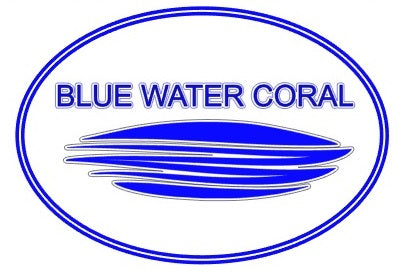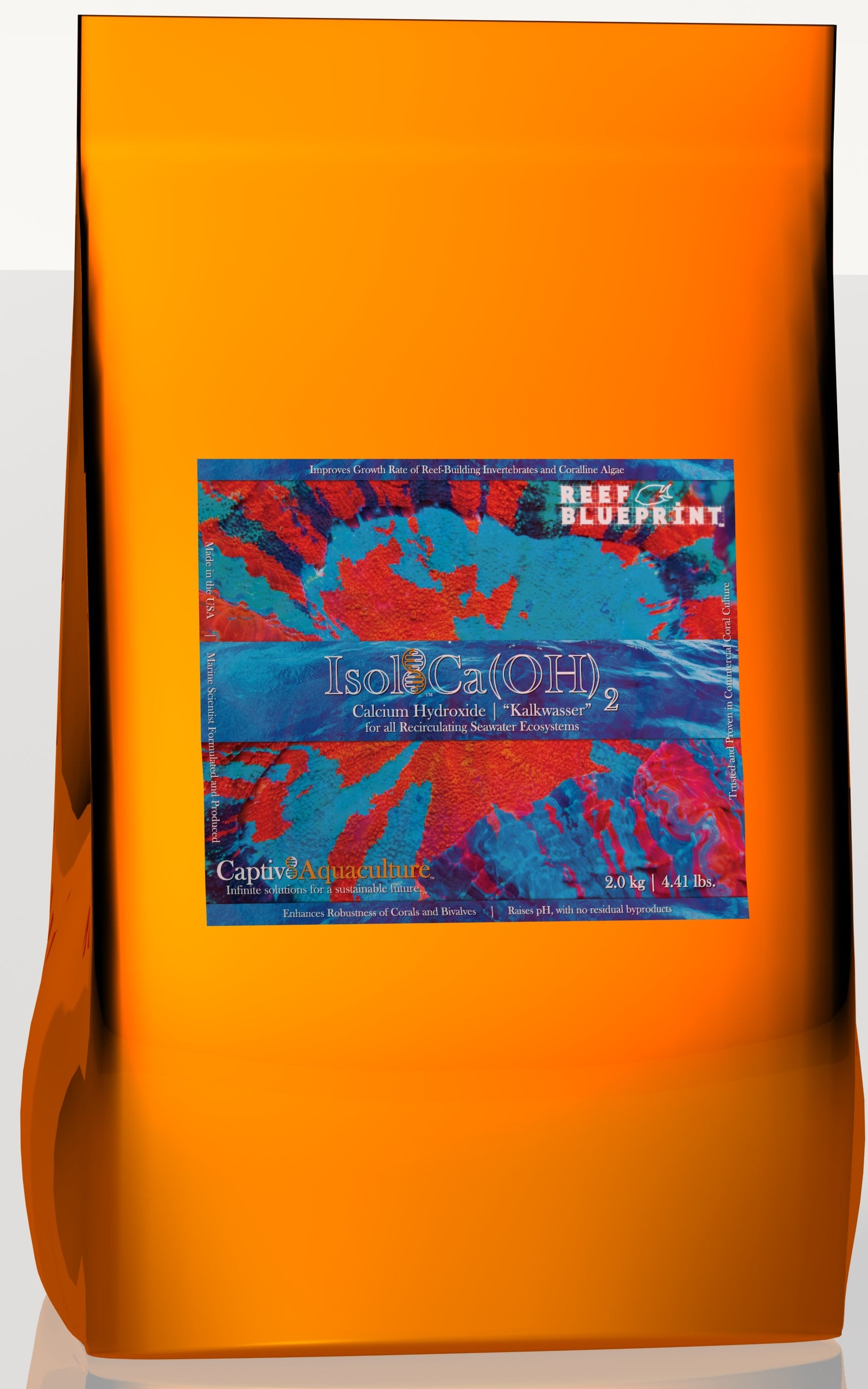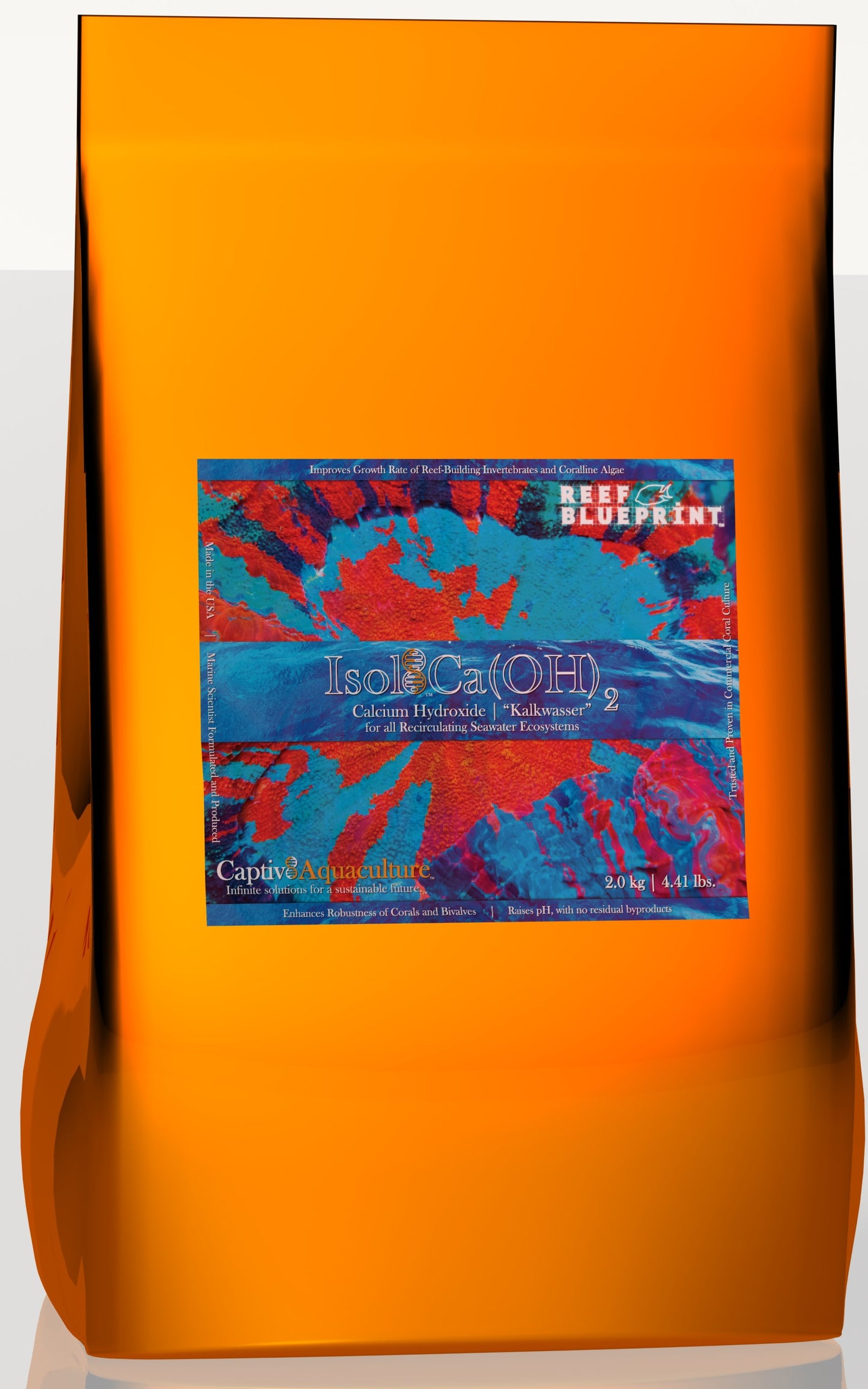Calcium Hydroxide | "Kalkwasser"
Characteristics
-
Provides calcium.
-
Increases pH.
-
Kalkwasser application is an integral part of an effective pH-management and coral growth regimen in dedicated coral culture systems.
Basic Application
-
See 'Application', below.
APPLICATION
Review Disclaimer at the bottom of this page prior to use. Keep out of reach of children and unauthorized persons. Avoid contact with skin, eyes, and mucous membranes. Store in a cool, dry location away from sunlight. Do not inhale dust.
The following discussion and recommendations are made expressly for recirculating systems. Laboratory application may proceed as required by study objectives. Review Disclaimer at bottom of page prior to using this or other Captiv8 Aquaculture product(s).
Your system's water chemistry and safety is your responsibility. Calcium hydroxide addition to any solution, including system water, will increase pH. Excessive addition may result in system pH increasing beyond the value tolerated by cohort members. Review the entire contents of this page prior to using Isol8 Ca(OH)2. Address any questions by contacting us, directly, prior to application.
While there are some preparatory steps required when using calcium hydroxide in systems housing cohorts comprised of reef building invertebrates, users are rewarded with greater pH stability (assuming that the dosing procedure below is adhered to) and, generally, greater rates of calcification than in systems not employing this calcium source. Users often find that the requirement to boost alkalinity is decreased in systems dosed with calcium hydroxide solution as a means of pH management.
Mixing and Dosing Procedure:
-
Calcium hydroxide and its solutions are skin and membrane irritants. Do not handle these substances without proper personal protective equipment. The pH of saturated calcium hydroxide solution is ~12.4 for T=25°C / 77°F.
-
Obtain a clean mixing vessel, such as a pail or jerrican, that can be covered or closed with a lid, with a capacity of 2 - 10 gallons. Recommended is to prepare enough solution to last up to 48 hours worth of dosing; required solution volume is system dependent and is a factor of pH change per unit time, so initially it is recommended to prepare 1 gallon of solution and then adjust this volume as system requirements dictate.
-
Isol8 Ca(OH)2 must be thoroughly mixed (using a long-handled plastic spoon or mixing paddle) into purified water at the rate of 6.50 g / 1 gallon (assuming T=25°C / 77°F) and allowed to settle for 15 minutes, or until the solution becomes clear. Place a lid on the mixing vessel to mitigate the interaction of the air space immediately above the solution with atmospheric CO2. Resist the temptation to prepare more solution than is required for 48 hours, as CO2 interaction with the solution will result in solution weakening.
-
Draw the calcium hydroxide solution from the vessel via dosing pump (e.g. peristaltic pump), the operation of which is regulated entirely by a calibrated pH controller (not by a timer). As previously noted, the pH of saturated calcium hydroxide solution is ~12.4 at a temperature of 25°C / 77°F; resultantly, this solution must be dosed via pH controlled application, as dosing with a timer can result in system pH exceeding a maximum allowable value (in recirculating marine ecosystems, we recommend a maximum pH value of 8.40).
-
Initially, locate the controller's pH probe in close proximity to the solution discharge point, enabling the controller to rapidly react to the change in system pH as the solution is dosed. With time, the distance between the probe and the discharge point can be modified to enable the solution to enter the system without driving the pH value above the allowable maximum.
-
The solution should be dripped into the system in a location where it will be dispersed throughout the system via steady water flow, such as near a return pump intake. The rate of solution addition should not cause the system pH to exceed the maximum allowable value by more than 0.02. Perform regular calibration of the pH controller to maintain maximum accuracy.
Notes:
-
Do not drip calcium hydroxide solution in close proximity to sessile invertebrates or developing finfish embryos. Monitor cohort for signs of distress when increasing average system alkalinity and pH, and decrease or halt rate of dosing if distress is noticed. Do not increase average system pH value by more than 0.10 per 12h. Aside from emergencies (e.g. excessive nutrient content in an active system, greatly depressed or excessive salinity, etc.), gradual changes in water composition are generally tolerated better by aquatic organisms than are rapid changes.
-
If using the recommended ratio of 6.50 g calcium hydroxide to 1 gallon purified water, then the solution should become clear with little or no undissolved material remaining on the bottom of the vessel. Keeping the vessel covered and taking steps to mitigate interaction with atmospheric CO2 slows the degradation of the solution strength, however there will eventually be sufficient interaction with CO2 to cause precipitation of calcium carbonate. It is for this reason that preparing a maximum of 48-hours' worth of solution is recommended. Precipitant which has formed and settled out of solution onto the bottom of the vessel will not significantly interact with the solution between emptying and cleaning the vessel (once every one to four weeks is generally recommended, depending upon rate of use and purity of water employed in solution preparation), and may be discarded when performing vessel cleaning.
-
If using a greater mass of calcium hydroxide than 6.50 g per 1 gallon water, then the undissolved solute must be allowed to settle to the bottom of the vessel, and the solution that is drawn by the peristaltic (or other type) dosing pump must be from above the layer of undissolved material. In this case, if using a float valve or similar means to maintain a static volume of solution in the vessel, then understand that the strength of the solution will gradually decrease (unless employing a stirring apparatus), resulting in ever-increasing volume of solution being dosed to maintain pH and, consequently, decreasing salinity of the system.
The rate at which saturated calcium hydroxide solution is dosed is a factor of system acidification, itself being driven by various chemical and physical factors which are unique to each independently-operating recirculating system, and which are constantly changing as cohort biomass increases and decreases. Among the factors involved are: abundance and decomposition rates of DOM and POM; addition of carbon dioxide, yielding carbonic acid, in conjunction with calcareous media reactors; rate of gas exchange and immediate atmospheric CO2 content; application of substances which feature a low pH (e.g. shelf-stable organic solutions); average alkalinity (carbonate hardness) value; balance of CO2 production and uptake as a matter of rates of aerobic respiration and photosynthesis, respectively. While this is not an exhaustive list of factors influencing pH in recirculating systems, these factors may collectively be of greatest consequence in the daily management of pH values.
The unique nature of each individual recirculating system dictates that pH be monitored and maintained within the appropriate range, as dictated by cohort requirements and desired ammonia : ammonium balance. Alkalinity, which may be functionally defined as the relative stability of pH, deserves similar daily attention from the caretaker(s) of recirculating systems.
DISCLAIMER
Notice: It is not possible to eliminate all risks associated with the use, handling, or storage of this product. Ineffectiveness, injury to crops and/or livestock, or other unintended consequences may result due to factors outside the control of Captiv8 Aquaculture or the seller. Buyer or user shall assume all such risks. For details, go to Terms and Conditions. Consult SDS before use.
Disclaimer: Captiv8 Aquaculture warrants that this product conforms to the description, and is reasonably fit for the purposes described, on its label. In no event shall Captiv8 Aquaculture or the seller be held liable for any incidental, consequential, or special damages, loss, or injury, including, without limiting, lost profits, resulting from the use or handling of this product. The exclusive remedy of the buyer or user for all claims shall be the return of the purchase price of this product. Express and implied warranties are disclaimed. Captiv8 Aquaculture does not authorize any agent or representative to make any other warranty, guarantee, or representation concerning this product


